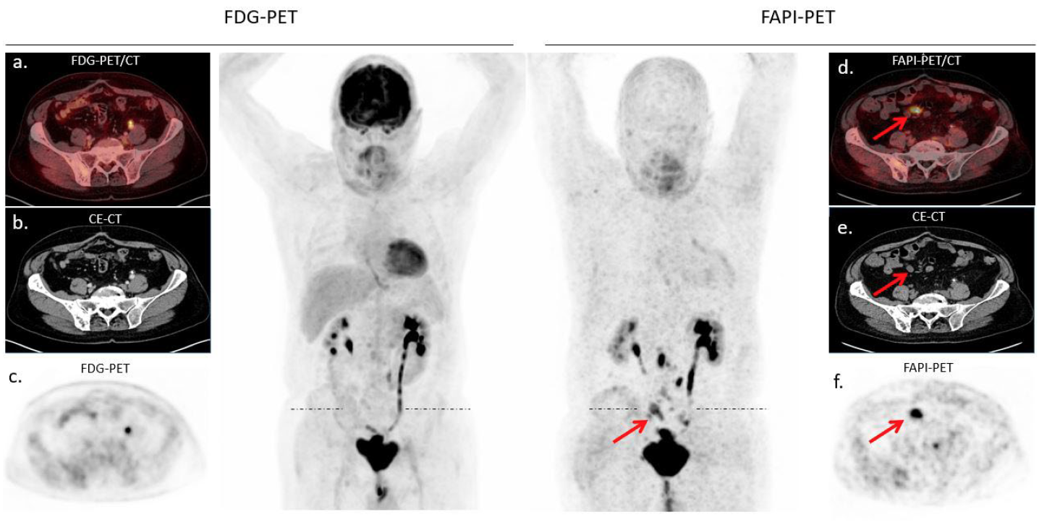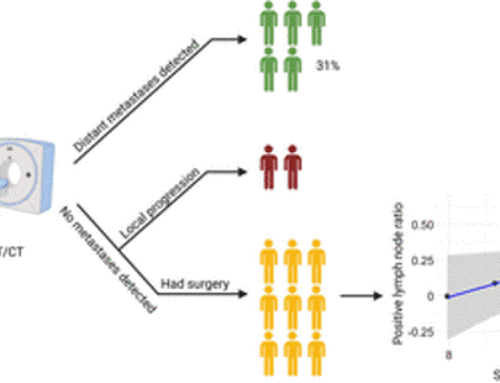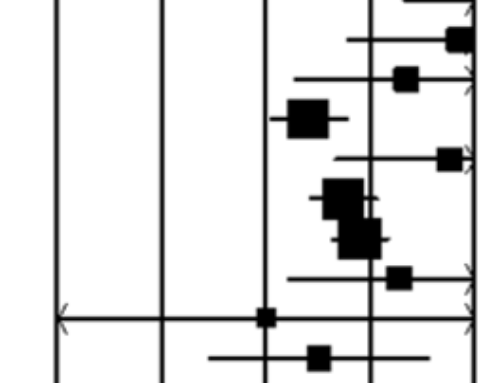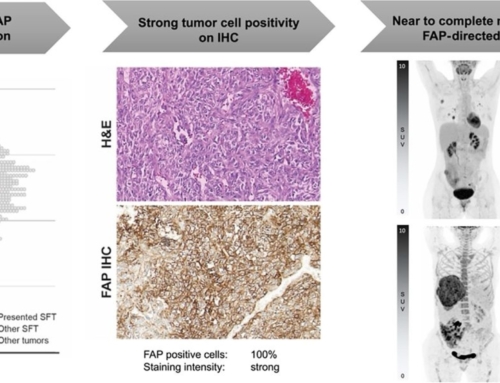E Novruzov, K Dendl, H Ndlovu, P L Choyke, M Dabir, M Beu, F Novruzov, E Mehdi, F Guliyev, S A Koerber, I Lawal, G Niegisch, J Debus, U Haberkorn, M Sathekge, F L Giesel
Aim/purpose: Fibroblast activation protein-(FAP)-ligands, a novel class of tracers for PET/CT imaging, demonstrated promising results in previous studies in various malignancies compared to standard [18F]FDG PET/CT. 68Ga-labeled fibroblast activation protein inhibitor-([68Ga]Ga-DOTA-FAPI)-PET/CT impresses with sharp contrasts in terms of high tumor uptake and low background noise leading to clear delineation. [18F]FDG PET/CT has limited accuracy in bladder cancer due to high background signal. Therefore, we sought to evaluate the diagnostic potential of [68Ga]FAPI in patients with bladder cancer.
Material and methods: This retrospective analysis consisted of 8 patients (median age 66), 7 of whom underwent both [68Ga]FAPI and [18F]FDG PET/CT scans with a median time interval of 5 days (range 1-20 days). Quantification of tracer uptake was determined with SUVmax and SUVmean. Furthermore, the tumor-to-background ratio (TBR) was derived by dividing the SUVmax of tumor lesions by the SUVmax of adipose tissue, skeletal muscle, and blood pool.
Results: Overall, 31 metastases were detected in five patients including lymph node metastases (n = 23), bone metastases (n = 4), lung metastases (n = 3), and a peritoneal metastasis (n = 1). In one patient, [68Ga]FAPI demonstrated significant uptake in the primary tumor located in the bladder wall. [68Ga]FAPI-PET/CT demonstrated significantly higher uptake compared to [18F]FDG PET/CT with higher mean SUVmax (8.2 vs. 4.6; p = 0.01). Furthermore, [68Ga]FAPI detected additional 30% (n = 9) lesions, missed by [18F]FDG. TBR demonstrated favorable uptake for [68Ga]FAPI in comparison to [18F]FDG. Significant differences were determined with regard to metastasis/blood pool ([68Ga]FAPI 5.3 vs [18F]FDG 1.9; p = 0.001).
Conclusion: [68Ga]FAPI-PET/CT is a promising diagnostic radioligand for patients with bladder cancer. This first described analysis of FAP-ligand in bladder cancer revealed superiority over [18F]FDG in a small patient cohort. Thus, this so far assumed potential has to be confirmed and extended by larger and prospective studies.


![FAP Expression in Renal Tumors Assessed by [68Ga]Ga-FAPI-46 PET Imaging and FAP Immunohistochemistry: A Case Series of Six Patients](https://sofie.com/wp-content/uploads/2025/12/info.ibamolecular-scaled-500x383.jpg)


![[68Ga]Ga-API-46 PET accuracy for cancer imaging with histopathology validation: a single-centre, single-arm, interventional, phase 2 trial](https://sofie.com/wp-content/uploads/2025/09/image-500x383.png)
